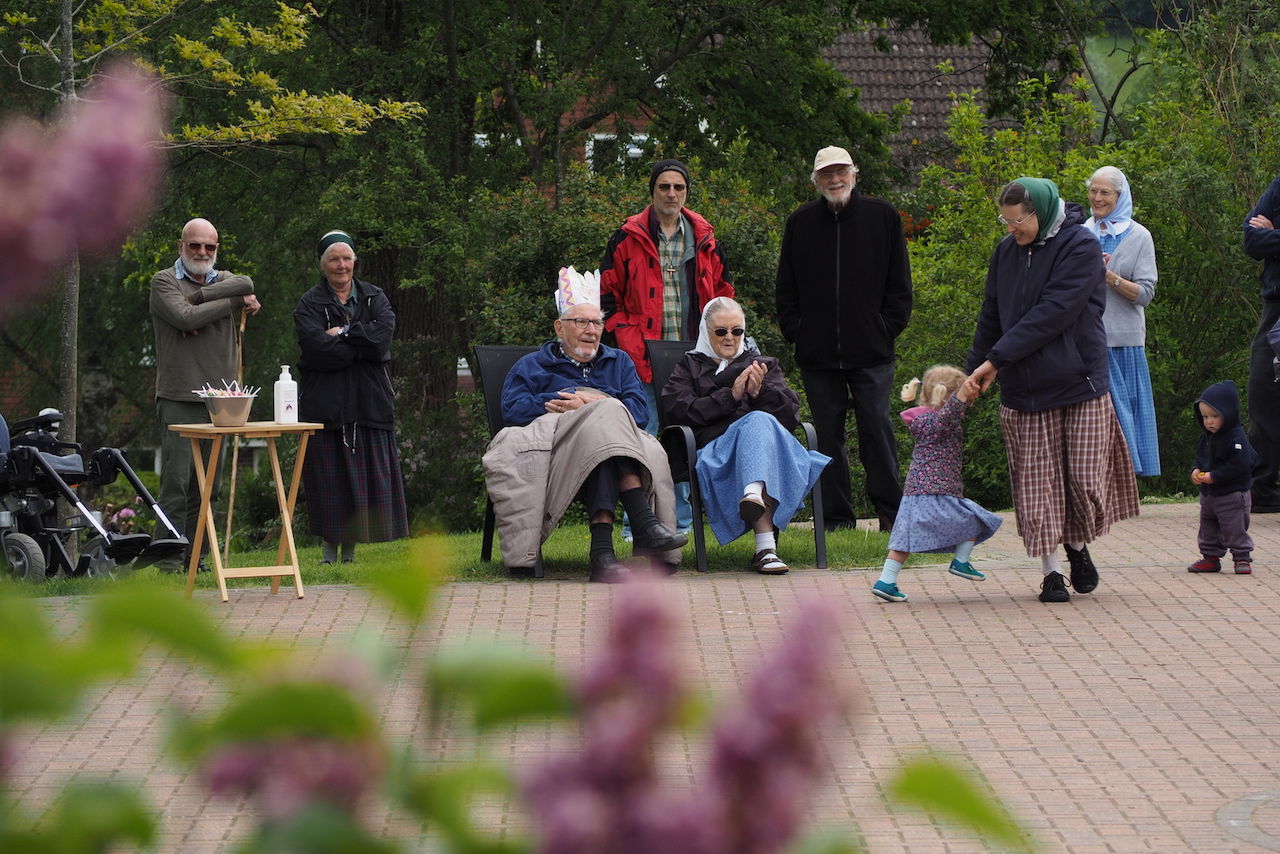Highlights
November marks National Caregiving Month. Having served for many years as a hospice chaplain and COO, I have seen first hand the power of home-based, family-centered caregiving. However, for all its strengths, providing care to a seriously ill adult as an informal, uncompensated, family caregiver can incur high costs that are often invisible to society at large. National Caregiving Month provides a perfect opportunity to increase our awareness of those costs.
Caregiving for an aging or ill adult can be costly on a number of levels. Financially, nearly half of all caregivers spend more than $5000 annually on care costs. These monies can cover a wide range of assistance from yard work and home maintenance, transportation, medication management, and grocery shopping to more intimate and time-intensive tasks such as bathing, dressing, toileting, and walking, all of which tend to require the purchase or rental of medical equipment or even covering the costs of custodial care.
In addition to making monetary sacrifices, caregivers can incur physical, emotional, and professional costs as well. Scholars note that family caregiving is considered a “chronic stress” situation affecting physical health and well being and causing a secondary impact on the professional life of the caregiver. On average, caregivers serve 20.4 hours per week, thus many must stop working or shift to part-time work, producing long-term effects on their Social Security payments and lifetime wage earnings, personal savings, professional advancement and earning potential. Employers also pay a price when an employee takes on elder care responsibilities. However, we all benefit from family-provided care because replacing it with compensated care would cost society approximately $450 billion.
In addition to making monetary sacrifices, caregivers can incur physical, emotional, and professional costs as well.
As a part of our research* on family caregiving, we met Kyle, a quintessential face of the “sandwich generation,” who provided a poignant example of the creative ways family caregivers manage the multi-faceted costs of providing elder care. Forty-two years old, married, and the father of three elementary school–aged children, Kyle balanced his home life with work as a full-time commercial pilot. His wife also worked full-time, and they relied on her parents and his father for childcare when Kyle traveled. Compounding this already full schedule, Kyle chose to serve as the primary caregiver for his divorced and single mother in the final year of her life.
He described how his caregiving responsibilities snuck up on him. In the early stages of her cancer diagnosis, his mom, who lived about an hour away from his home, would call with an emergency and he, or his uncle if Kyle was out of town on a trip, would drive to the hospital to help her navigate the relevant care decisions. Between these crisis moments, she was able to live on her own. Kyle would mow her lawn and check up on her every few days by phone, but that care didn’t intrude too heavily into his day-to-day life.
But then his mom’s cancer treatments became less effective, the emergency calls came more frequently, and the doctor sat down with Kyle and his mother to explain that she could not live on her own any longer. She was referred to hospice, and she could either be admitted to a long-term care facility, which would require her to “spend down” her personal savings in order to qualify, eventually, for the Medicaid Room and Board benefit, or move in with Kyle and his family.
As both mother and son contemplated their next steps, Kyle talked with his wife about what they could afford to do. The couple decided that home care would be best, if she would agree to it, and that they “were prepared to ride it out knowing how difficult it might be.” The next day they invited Kyle’s mom to live with them, but they had one stipulation: that she not smoke cigarettes inside the house, a choice he knew would be hard for her to make as a life-long smoker. However, she agreed, but new tense and vulnerable conversations soon followed as they faced moving her out of her home, closing out her financial accounts, settling her debts, and renovating one of Kyle’s children’s rooms for her. Meanwhile, his mom set up a payment plan with Kyle so that she could contribute small amounts to their food and utility costs.
In time, Kyle became her agent designated by his mother’s power of attorney, which helped him manage her finances per her wishes. Much to Kyle’s surprise, his father, divorced from his mother for more than thirty years, offered to help him by staying with his mom a few days a week as her condition declined. Kyle’s mom lived with them for almost a year, and Kyle was at her side when she died.
For many grown children, the impulse to care for an aging parent is there, but the financial ability do so is not.
Recent coverage by Forbes of the out-of-pocket costs of family caregivers highlights that most caregivers admitted that they had not talked with their family members in advance about how to cover expenses. Kyle spoke with candor about how nervous he was to broach the private subject of finances with his mom. He wanted to respect her autonomy and to reassure her that he would honor her wishes, while recognizing how much her health and her personal privacy were now out of her control. Making her wishes known about the costs of her care helped return power and some independence to her. A year after his mom’s death, Kyle admitted while that balancing all the cumulative, unexpected costs of caring for his mom was challenging, he would make the choice all over again.
For many grown children, the impulse to care for an aging parent is there, but inability to pay the direct costs or to sacrifice the financial income from steady work makes living the impulse nearly impossible. Kyle had a supportive spouse, father, and employer who all made it possible for him to care for his mother in her final year of life. But many more sons and daughters will be our future Kyles, and they will not have that support. For example, Linda Waite writes evocatively of how family trees are turning into bean stalks, a phenomena of reduced birthrates and the longer life spans of older Americans that will add further complexity to the balancing act that is family care.
Conversely, Suzanne Bianchi and Judith Seltzer note that contemporary family trees are also changing shape as divorce, single parenthood, cohabitation, and remarriage become the norm. These configurations graft in new family tree branches whose role in the caregiving transfer of money, time, and housing remains ambiguous. Law Professor Allison Hoffman suggests that to compensate for a reduction in kinship care, “next friend” care will increase, with financial, physical, and emotional costs incurred by our friends and neighbors. And ultimately, when informal family care doesn’t exist or fails, the public sector must pick up the slack. However, as Paul Taylor has already noted, a gap in public sector funding also looms as the financial needs of an aging Baby Boomer population soon outweigh the contributions of younger generations.
Family caregivers need our collective and individual attention and support.
Caregiving costs, especially at the end of life, are expensive. Reducing costs system-wide as well as supporting an increase in informal care will require a greater level of civic education as well as an expansion of current programs that are working well. The recent IOM report Dying in America recommended that several caregiving support efforts be continued and expanded, such as “Medicaid’s Cash and Counseling program, available in about 15 states, that permits beneficiaries to pay family members modest sums for home care services in some cases.”
Beyond the Medicaid population, all caregivers may currently be eligible for a $3000 tax exemption for elder care costs, but much more could and should be done. Congress has considered legislation seeking to compensate caregivers through recognizing their time for purposes of Social Security payments. Other countries already do so. Sen. Bob Casey has proposed a national “Caregiver Corps,” which would provide training and potentially school loan debt relief for caregiving volunteers in local communities. A paid Family and Medical Leave Act benefit would also be a great start in moving towards tangible recognition of the sacrifices made of family caregivers.
In addition to societal efforts to support family caregiving, individual family caregivers and elders can increase their efforts to think outside of the box in covering caregiving and end-of-life expenses. For example, Kyle’s mother bartered flight lessons with a local mortuary owner for her cremation costs, which reduced the eventual financial burden that Kyle faced after her death. And as always, talking with family members about our wishes remains a crucial step in being prepared.
Family caregivers are an invisible force for good in our society, and they need our collective and individual attention and support. As many of us gather around Thanksgiving tables, we face a perfect opportunity to remember and give thanks for the 39% of Americans who provide some level of uncompensated care for an adult with health or mobility challenges.
*All names have been changed to protect the identities of our interview cohort. Naomi Cahn, Harold H. Greene Professor of Law at The George Washington University Law School, and I conducted research on twenty-first-century family caregiving, grief, and inheritance that will be presented in the book Homeward Bound, slated for publication by Oxford University Press in 2016.










